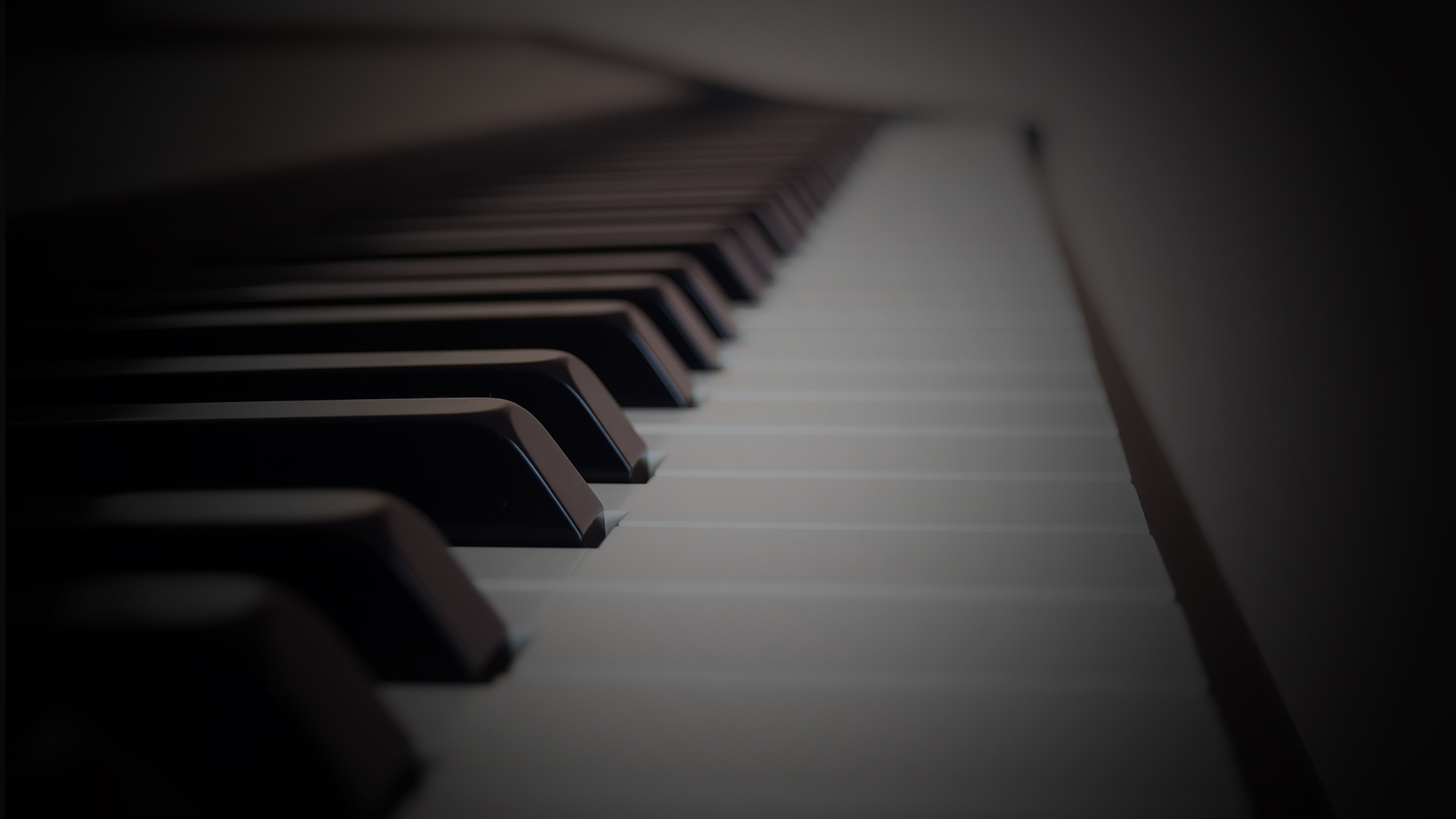Play Blue Moon – Jazz Piano Style
Learning Focus
Music Style
Free Lessons
Get free weekly lessons, practice tips, and downloadable resources to your inbox!
As jazz piano students, we dedicate a lot of practice time to isolated skills such as chord voicings, progressions, improv scales and more. Once we begin to apply this knowledge to jazz repertoire, all of these separate skills begin to come together in fascinating ways. Perhaps most importantly, jazz standards illuminate for us exactly how these various skills work together when performing jazz repertoire. Therefore, today’s Quick Tip on Play Blue Moon – Jazz Piano Style offers students the exciting opportunity to make important discoveries on how to play from a lead sheet while learning a timeless standard. You’ll learn:
- Blue Moon: Song Facts
- Blue Moon: Song Analysis
- Blue Moon: Lead Sheet & Chords
- Play Blue Moon: Beginner Jazz Piano Approach
- Blue Moon: Recommended Listening
Before we dig into some specific excerpts and examples, let’s first learn a little bit about the historical background and harmonic structure of “Blue Moon.”
Blue Moon: Song Facts
The American songwriting duo of Ricard Rogers and Lorenz Hart composed “Blue Moon” in 1934. Ironically, the tune has a rather unusual background owing to the fact that the lyrics were reworked a number of times. The tune was originally named “Prayer” when it was first composed in 1934 for the MGM film Hollywood Party. However, the scene featuring the song was cut from the film. The duo then reworked the tune as “The Bad in Every Man!” for a different 1934 MGM film, Manhattan Melodrama. Afterward, in the same year, music publisher Jack Robbins promised to heavily promote the song if Hart would rework the lyrics a third time to have broader commercial appeal. Thus, “Blue Moon” was born. In fact, in its final form, “Blue Moon” was Rodgers and Hart’s only hit song not associated with a Broadway show or a Hollywood film.¹
Blue Moon: Song Analysis
Whenever you decide to add a jazz standard like “Blue Moon” to your repertoire, it’s a good habit to undertake an analysis of the tune. This includes learning the compositional form as well as a harmonic analysis of the chords. Understanding a tune’s harmony and formal structure are foundational skills for being able to improvise over the tune. In addition, harmonic analysis helps your brain processes the musical sounds that your ears are hearing when you play the song. This will help you recognize these chord progressions when they occur in other songs as well.
Now that we’ve discussed the benefits of analyzing a jazz standard, let’s take a look at how Rogers and Hart put “Blue Moon” together from a compositional perspective.
Song Key
Recordings of “Blue Moon” can be found in a variety of different keys, especially vocal recordings where special consideration is given to the unique vocal range and ability of individual artists. However, fake books typically publish “Blue Moon” in the key of E♭ major. Nevertheless, the “Blue Moon” sheet music for today’s tutorial is arranged in the key of C major for beginner jazz piano students.
Due to publisher’s restrictions, the sheet music for today’s lesson that appears in John’s tutorial is available through our partners at MusicNotes.com. However, PWJ members can download a lesson sheet PDF containing the examples that appear in this blog. In addition, members can also download the backing tracks that are included with this lesson. These resources appear at the bottom of this page when you are logged in with your membership. Moreover, you can easily transpose the “Blue Moon” chords to any key using our Smart Sheet Music.
Song Form
Rogers and Hart’s popular jazz standard “Blue Moon” contains a total of 32-bars and follows an AABA structure (also known as song form). This common song form consists of four sections, each of which are 8 measures long.

In the next section, we’ll take a closer look at the chords for “Blue Moon” in the key of C major.
Blue Moon: Lead Sheet & Chords
When we analyze the chords of a jazz standard like Rogers and Hart’s “Blue Moon,” we assign each chord a Roman numeral in the parent key. For example, in C major, the chord Cmaj7 is assigned the Roman numeral Ⅰ, which we can annotate simply as Ⅰ, or more specifically as Ⅰmaj7 or Ⅰ▵7. Similarly, the chord G7 would be Ⅴ7. Occasionally, we encounter a chord in which the root bears an accidental, like the B♭7 in measure 5. To analyze this chord, we add a “♭” symbol to our analysis to indicate that the root contains an accidental in the parent key. Therefore, B♭7 is the ♭Ⅶ7 in C major.
The following “Blue Moon” lead sheet contains a complete harmonic analysis of the tune. (Note that a curved arrow indicates the presence of a secondary dominant. Similarly, a dotted-curved arrow represents the presence of tritone substitution. Moreover, a straight arrow indicates a secondary Ⅱm7 chord which resolves to a secondary Ⅴ7 chord.)
The Turnaround Progression in “Blue Moon”
“Blue Moon” is a textbook example of a jazz standard that is composed with the turnaround progression—one of the most common progressions in jazz repertoire. By definition, a turnaround progression occurs when a composer or arranger uses the chord sequence Ⅰ→Ⅵ→Ⅱ→Ⅴ. Since this progression ends with a Ⅴ chord, it is most often followed by a Ⅰ chord. Therefore, the word “turnaround” describes harmonic movement that returns to the Ⅰ chord, or tonic.
There are many different variations of the turnaround progression. One of the most common examples would be one that uses all diatonic 7th chords, such as C▵7→Am7→Dm7→G7 (see measures 7–8). However, either one or both of the minor 7th chords in a turnaround progression can also be made into dominant 7th chords. For example, you’ll find several occurrences of C▵7→A7→Dm7→G7 in today’s arrangement.
Another variation of the turnaround progression occurs in the B section of “Blue Moon” where the same chord order is used, but the progression starts on the Ⅱ chord instead (i.e.: Dm7→G7→C6→Am7).
Now that you understand a bit about how the harmony of “Blue Moon” works, let’s play some of these chords on the piano.
Blue Moon Piano Chords
The “Blue Moon” lead sheet in the previous section contains a total of fifteen chords in all. The following chord chart contains piano chord diagrams for each of these chords.
A great first step for beginner piano students is learning to play a tune’s melody in the right hand with the 7th chords from the lead sheet in the left hand. Once you can do that, then the next step is to develop your own arrangement that uses more deliberate jazz piano chord voicings that are appropriate for your playing level.
In the next section, we’ll demonstrate how beginner students can apply basic jazz piano voicings when playing “Blue Moon.”
Play Blue Moon: Beginner Jazz Piano Approach
An arrangement of a jazz standard is simply a version of the tune that applies techniques that are suitable for a particular playing level. Learning to develop your own jazz piano arrangements is an important process for all jazz piano students. In addition, it’s also helpful to play arrangements by professional arrangers that are a good fit for your current level.
Another characteristic of an arrangement is that it typically includes an introduction and an ending. These aspects are important components of a jazz performance that are often not included on a lead sheet. In this section, we’ll look at excerpts from each section of John Proulx’s arrangement of “Blue Moon.” However, due to publisher’s restrictions, the melody has been omitted in these examples.
You can use the following links to quickly navigate directly to a specific section of the tune:
Intro
The are many possibilities when it comes to jazz piano introductions. They can be rather brief or quite extensive. Moreover, some intros establish the tempo right away while others use rubato, a slower and more expressive interpretation that employs an elastic sense of time.
Our arrangement of “Blue Moon” contains a short introduction that begins at the same tempo that we’ll use throughout the performance. The example below is recorded at 90 BPM. The harmony here is inspired by another standard—the A section from “On Green Dolphin Street.”

A Sections
Immediately after the intro, we launch into the first A section of “Blue Moon.” A great approach for beginner jazz piano students is to harmonize the melody using guide tones, which are the 3rd and 7th of a seventh chord, or the 3rd and 6th of a sixth chord. With this approach, you’ll typically play the guide tones with the inner fingers, especially the thumbs. However, jazz pianists often have to make adjustments to accommodate specific characteristics of the melody. Therefore, the harmony notes in the inner voices are not always the 3rd and 7th. In addition, jazz pianists sometimes include countermelodies in the inner voices.
Here is one possibility for how a beginner jazz pianist can harmonize the melody for the first A section of “Blue Moon.”

The second A section of “Blue Moon” is quite similar to the initial A section. However, the chords in the final two measures are different so as to set up the B section. Here is an example of how to accompany the second A section.

B Section
After the two A section are completed, we come to the “bridge” or B section of the AABA song form. Jazz composers often introduce additional chords or even different keys altogether in the B section of a tune, which creates a nice sense of contrast and peaks the listener’s attention.
Here is how a beginner jazz piano student can use guide tones to accompany the melody on the B section of “Blue Moon.”

After the B section, the A section is repeated one more time. In the case of “Blue Moon,” the final A section is essentially identical to the initial A section. Therefore, let’s jump ahead to John’s outro for “Blue Moon.”
Outro
Just like an introduction, a jazz ending or “outro” can be fairly concise or a bit more extended. Often times, arrangers like to include some aspects of continuity between their intros and endings. This signals to the listener that the song is coming to a close and gives the arrangement as sense of balance and familiarity.
Here is John’s outro for “Blue Moon.”

One way to develop your creative instincts for your own piano arrangements is by listening to recordings. Therefore, we’ve included a special listening section that you won’t want to skip as we wrap up today’s lesson. If you’re up for a challenge, you might even want to try to play what you hear!
Blue Moon: Recommended Listening
One of the best ways to get off the lead sheet when playing jazz standards like “Blue Moon” is by listening. Therefore, this section includes a handful of recordings of “Blue Moon” that have been selected with the jazz piano student in mind. First, we have a solo piano recording of “Blue Moon” by PWJ cofounder Yannick Lambrecht. Afterward, we’ve included some additional vocal, ensemble and solo recordings for your inspiration.
Yannick Lambrecht
“Blue Moon” (2022)
Vocal Recordings
It’s no secret that one of the best ways for instrumentalists to learn jazz standards is to learn them from vocalists. Therefore, we’ve included 3 vocal recordings of “Blue Moon” in this section. First, we have Billie Holiday’s 1952 recording of “Blue Moon,” which features Oscar Peterson on piano. Secondly, we have Carmen McRae’s 1956 recording with the Tadd Dameron Orchestra. Finally, we have Frank Sinatra’s popular recording of “Blue Moon” from 1961 with the Nelson Riddle Orchestra.
Billie Holiday
“Blue Moon” (1952)
Carmen McRae
“Blue Moon” (1956)
Frank Sinatra
“Blue Moon” (1961)
Incidentally, if you want to learn how to accompany a vocalist on “Blue Moon,” then be sure to check out the following courses:
Piano Recordings
In this final section, we’ve include 3 additional piano recordings of “Blue Moon” that we think you’ll love. First, we have Wynton Kelly’s 1951 recording from New Faces – New Sounds. Next, we have a live performance by Erroll Garner from 1968. Finally, we have a solo piano rendition by Kenny Barron from 1992.
Wynton Kelly
“Blue Moon” (1951)
Erroll Garner
“Blue Moon” (1968)
Kenny Barron
“Blue Moon” (1992)
Perhaps these recordings have inspired you to want to learn even more techniques for how to play “Blue Moon” on piano. If so, then check out the following full-length courses, which include improvisation techniques and much more.
Conclusion
Congratulations, you’ve finished today’s lesson on Play Blue Moon – Jazz Piano Style. In the process, you’ve learned some of the most important skills that go into crafting a beginner jazz piano arrangement from a lead sheet on a jazz standard like “Blue Moon.” In addition, you now have a taste for how various pianists have approached this classic tune throughout the years.
If you enjoyed today’s lesson, then be sure to check out the following PWJ resources:
Courses
- Jazz Standard Analysis (Int, Adv)
- Jazz Intro and Outro Runs (Int/Adv)
- Breaking Down a Jazz Solo (Int, Adv)
- Jazz Walking Bass Lines (Int, Adv)
- Play Piano Lead Sheets with 7th Chords (Int)
- Play Piano Lead Sheets with Shells & Guide Tones (Int)
- Play Piano Lead Sheets with Extensions & Alterations (Int/Adv)
- 32 Colorful Jazz Endings (Int)
Quick Tips
- 3 Must-Know Jazz Piano Intros (Int)
- 7 Techniques to Spice Up a Jazz Melody (Int)
- How to Play a Two Feel Bass Line on Piano (Beg–Adv)
- 3 Essential Techniques for Jazz Piano Walking Bass (Int/Adv)
- Guide Tones (Piano): The Complete Guide (Beg/Int)
- 7 Beautiful Endings for Jazz Tunes (Int)
- Jazz Piano Chord Voicings–The Complete Guide (Int)
- Jazz Piano 10 Steps from Beginner to Pro (Beg-Adv)
Jazz Swing Learning Tracks
Jazz Ballad Learning Tracks
Thanks for learning with us today! We’ll see you next time.
Would you like to comment on this lesson?
Visit this Quick Tip on YouTube
¹ Wilson, Jeremy. “Blue Moon (1934).” JazzStandards.com.
 Writer
Writer
Michael LaDisa
Michael LaDisa graduated from the University of North Texas with a major in Music Theory & Composition. He lives in Chicago where he operates a private teaching studio and performs regularly as a solo pianist. His educational work with students has been featured on WGN-TV Evening News, Fox 32 Good Day,...
More Free Lessons
Explore the methods and mindset needed to comp on piano in the swing style with this complete guide to jazz piano comping for all levels.
Discover how to play a pop accompaniment groove with a specific view toward an intentional bass line...examples for all playing levels.
Level up your jazz harmony in this dedicated lesson on the backdoor 2-5-1 progression exploring aural recognition, chord voicings and improvisation.
Looking for downloads?
Subscribe to a membership plan for full access to this Quick Tip's sheet music and backing tracks!
Join Us
Get instant access to this Quick Tip and other member features with a PWJ membership!
Guided Learning Tracks
View guided learning tracks for all music styles and skill levels
Progress Tracking
Complete lessons and courses as you track your learning progress
Downloadable Resources
Download Sheet Music and Backing Tracks
Community Forums
Engage with other PWJ members in our member-only community forums
Become a better piano player today. Try us out completely free for 14 days!






